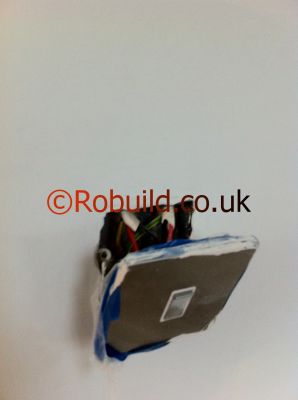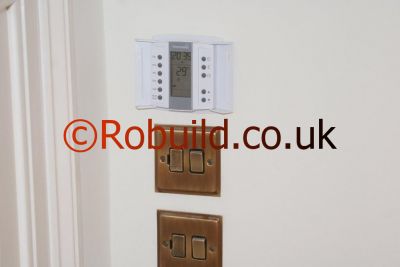A light switch is always fixed in a flush or surface mounting box. The box is usually made of metal or plastic when embedded in the wall or ceiling, and has lugs which take the screws used to fix on the switchplate , and knockout holes – removable discs – in the back and side for cables.

The red conductor/wire carries current from the mains via a ceiling rose or joint/junction box to the switch, and the black/brown takes the current on to the light bulb when the switch is in the ON position.The multicoloured (yellow & green) wire is the earth wire, for safety.The wiring connections are made on the back of the switchplate, and thus completely contained within the box.

The basic arrangement holds any type of switch. Rocker switches with a seesaw movement are the commonest, having mostly replaced the old tumbler switches. Most modern switches are digital or sensor based. Switch plates with up to 12 rocker switches are available. Ceiling switches used for safety in bathrooms, have a cord for control.

A refinement of the ON/OFF switch is the dimmer, with a rotating disc for adjusting the lighting level.
All these designs are reliable, and unlikely to develop electrical faults. But sometimes a switchplate needs to be replaced. You may also wish to substitute one sort of switch, such as a dimmer, for another. If you are installing a dimmer, the maximum wattage must not be lower than the wattage of the light bulbs it controls.
Switch boxes can be mounted on the wall or sunk into the plaster or plasterboard.Flush switches are neater than surface ones, and safer because they are less likely to be knocked and damaged.
Be safe – always use Professional & Qualified Electricians for rewiring.

